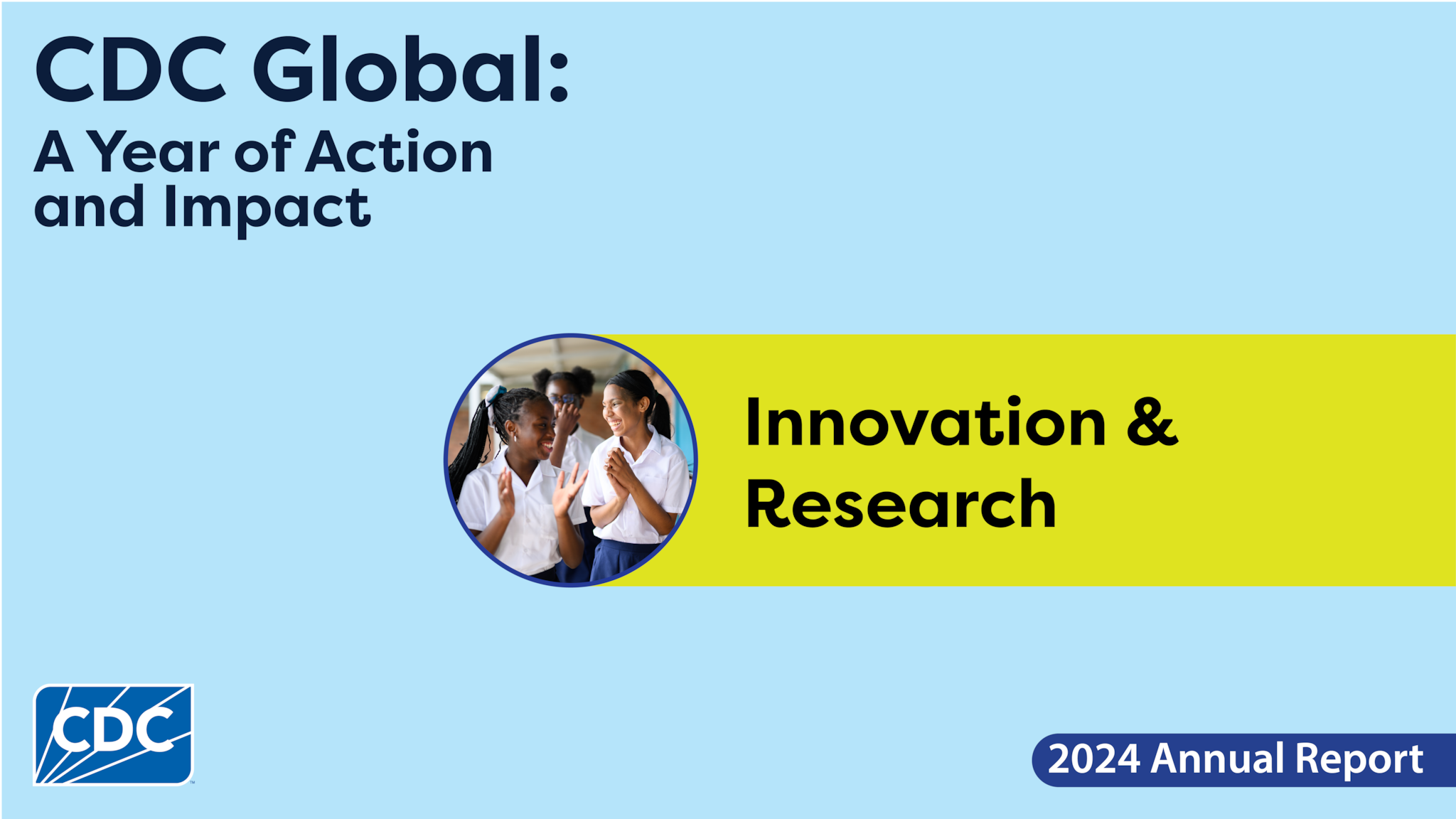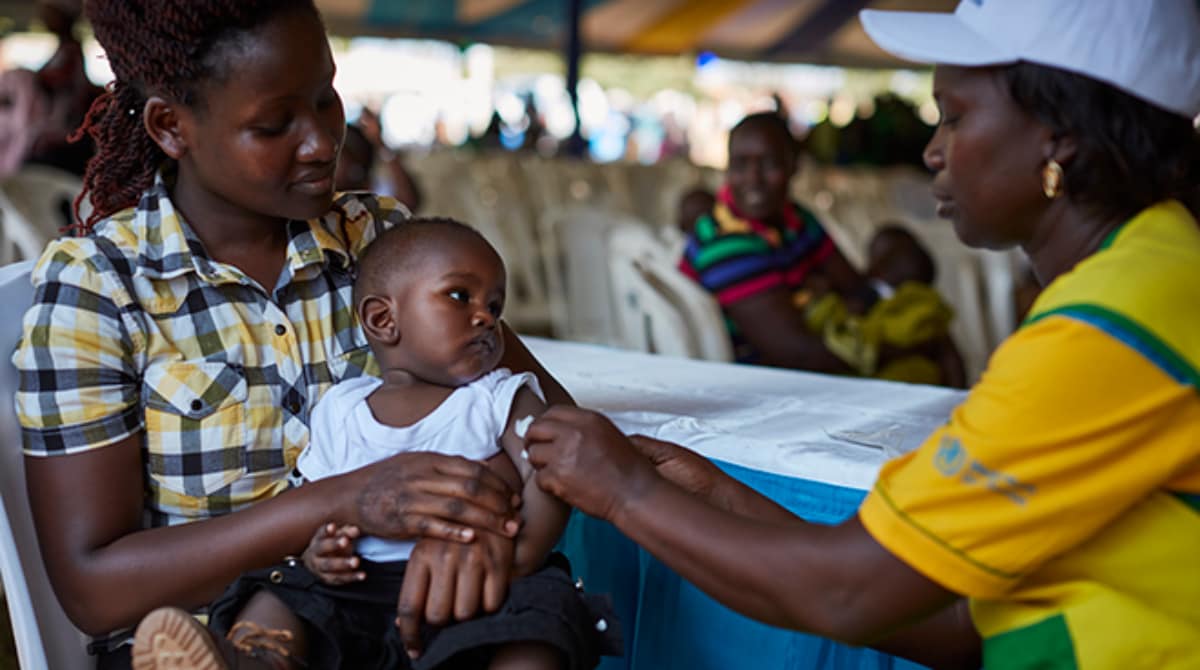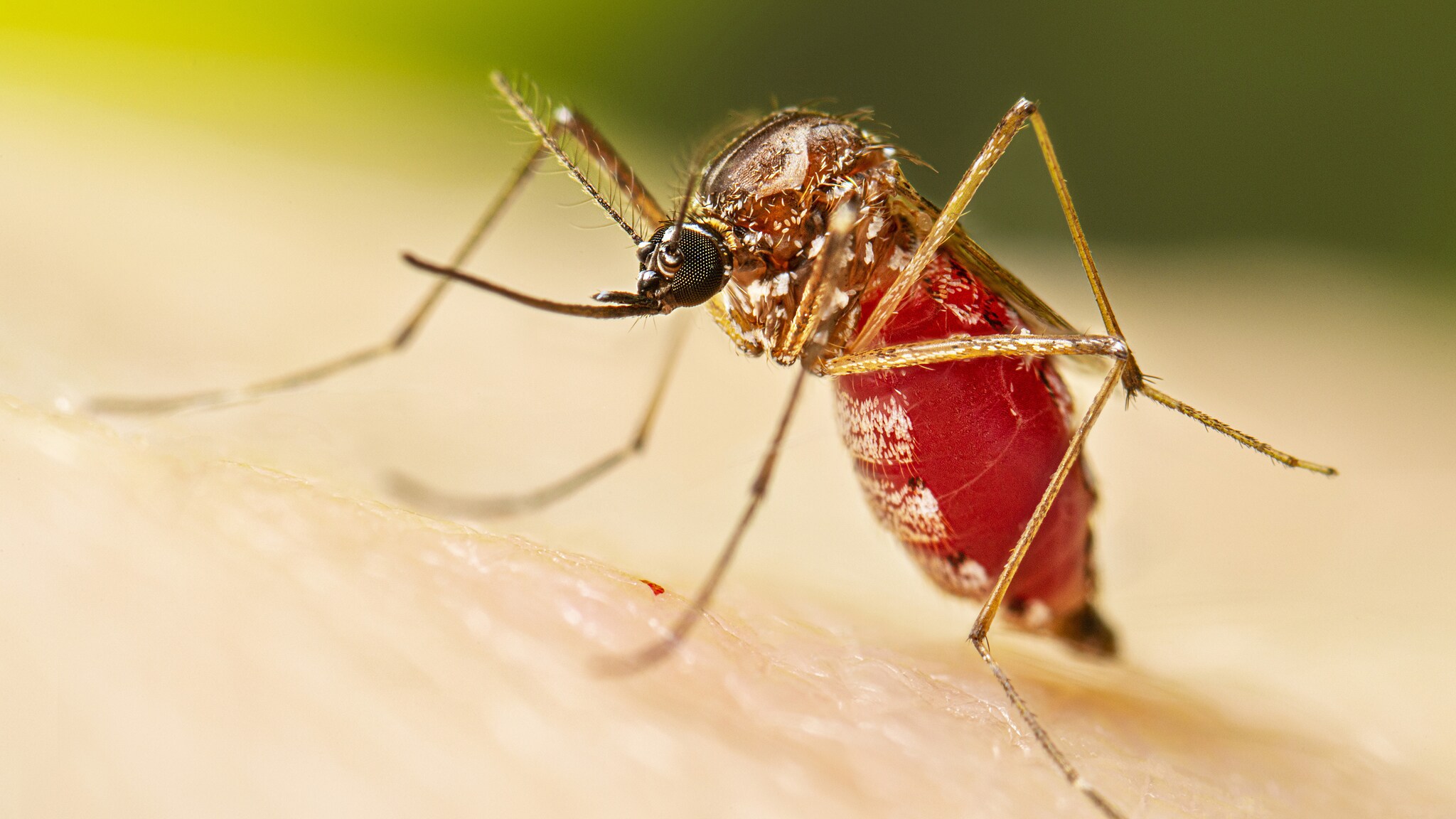At a glance
In 2024, CDC pushed public health forward, protecting people’s lives and livelihoods.

Vaccine innovation

Game-changing developments
In 2024, the malaria vaccine CDC developed with Kenya Medical Research Institute was officially added to routine immunization programs in Cameroon and Burkina Faso, marking a historic milestone in the global fight against malaria. CDC laboratory scientists are also working with NIH to develop a new vaccine against the deadly Nipah virus, which is currently in late pre-clinical studies.
New delivery methods
CDC's partnership on a novel measles-rubella microneedle patch vaccine produced the first data on the use of any microneedle patch to deliver any vaccine to children. Positive results from the first clinical trial were published in May 2024, with a follow-up trial planned for 2025. This success has sparked development of patch vaccines for other diseases, like Hepatitis B, and a rotavirus vaccine that could be delivered by shot or patch, helping to overcome safety and efficacy concerns with oral rotavirus vaccines.
Efficient approaches
CDC experts developed plans to conserve the limited polio vaccine supply by using a fractional dose of inactivated poliovirus vaccine (fIPV) alongside a full dose of the oral vaccine. With 5.9 million doses of fIPV successfully given to children in Nigeria, the approach has proven effective and has been implemented in other countries like Pakistan and China.
Early warning
Wastewater and environmental surveillance (WES) can provide early warning on community-level infections, especially in low-resource settings where clinical testing is unavailable or underused. CDC expanded WES in countries across three global regions with targeted demonstration platforms in Georgia, Kenya, and Thailand.
In addition to expanding the number of WES systems, CDC also expanded the breadth. For example, to aid ongoing mpox response efforts in Kenya, mpox surveillance will be added to the existing WES systems. To further improve global capacity, CDC and partners developed materials to help country partners prioritize this critical innovation within single and multi-pathogen surveillance strategies.
Treatment for children
CDC collaborated with global partners to address a critical treatment gap for children living with HIV. CDC led PEPFAR efforts to introduce optimal child-friendly formulations of antiretroviral medications recently approved for children through helping PEPFAR-supported countries develop procedures that support the use of pediatric dolutegravir.
In 2024, CDC's implementation of child-friendly antiretroviral medications contributed to 90% viral load suppression in children under 15 years old living with HIV, up from 73% in 2020.
Disease eradication
The world continues to inch closer to Guinea worm (GW) eradication, with just 14 human cases reported in 2023. However, more than 800 infections in animals were reported in six countries, mostly in domesticated dogs. No tools currently exist to diagnose GW infection in humans or animals at its earliest stages.
CDC is developing a new test to detect GW in people and animals months before worms emerge. Catching GW early can prevent environmental contamination and stop the disease from spreading. CDC's work on novel diagnostics provides national programs with critical innovations that further build core capabilities and help make global eradication possible.
Story Spotlight: An innovative way to fight dengue - More (but safer) mosquitos

In the midst of 2024's record-breaking dengue outbreaks in Latin America, CDC partnered with El Salvador's Ministry of Health, the World Mosquito Program, and the Puerto Rico Vector Control Unit - International (PRVCU-International) to implement an innovative program known as the Wolbachia Program.
Like many other diseases, dengue is spread by mosquitoes. But researchers have discovered that infecting mosquitos with a common bacteria called Wolbachia blocks serious viruses like dengue, chikungunya, and Zika from growing in mosquitoes. This means they cannot transmit those diseases to people. Not only that, but the Wolbachia-infected mosquitoes pass the bacteria to their offspring, gradually replacing the local mosquito population over time. The good news is that Wolbachia is harmless to humans; lots of other insects already carry it, including bees and butterflies.
From January to June 2024, the program released Wolbachia-infected mosquitoes in three of El Salvador's municipalities with high dengue transmission. Through the Wolbachia Program in El Salvador, CDC and partners expect to protect almost 400,000 people from mosquitoes carrying dengue. As of late 2024, the Wolbachia replacement method has been successfully implemented in 14 countries worldwide.
CDC continues to work closely with governments in Central America to respond to dengue outbreaks, enhance dengue and mosquito surveillance, and assess the long-term impact of Wolbachia on dengue rates.